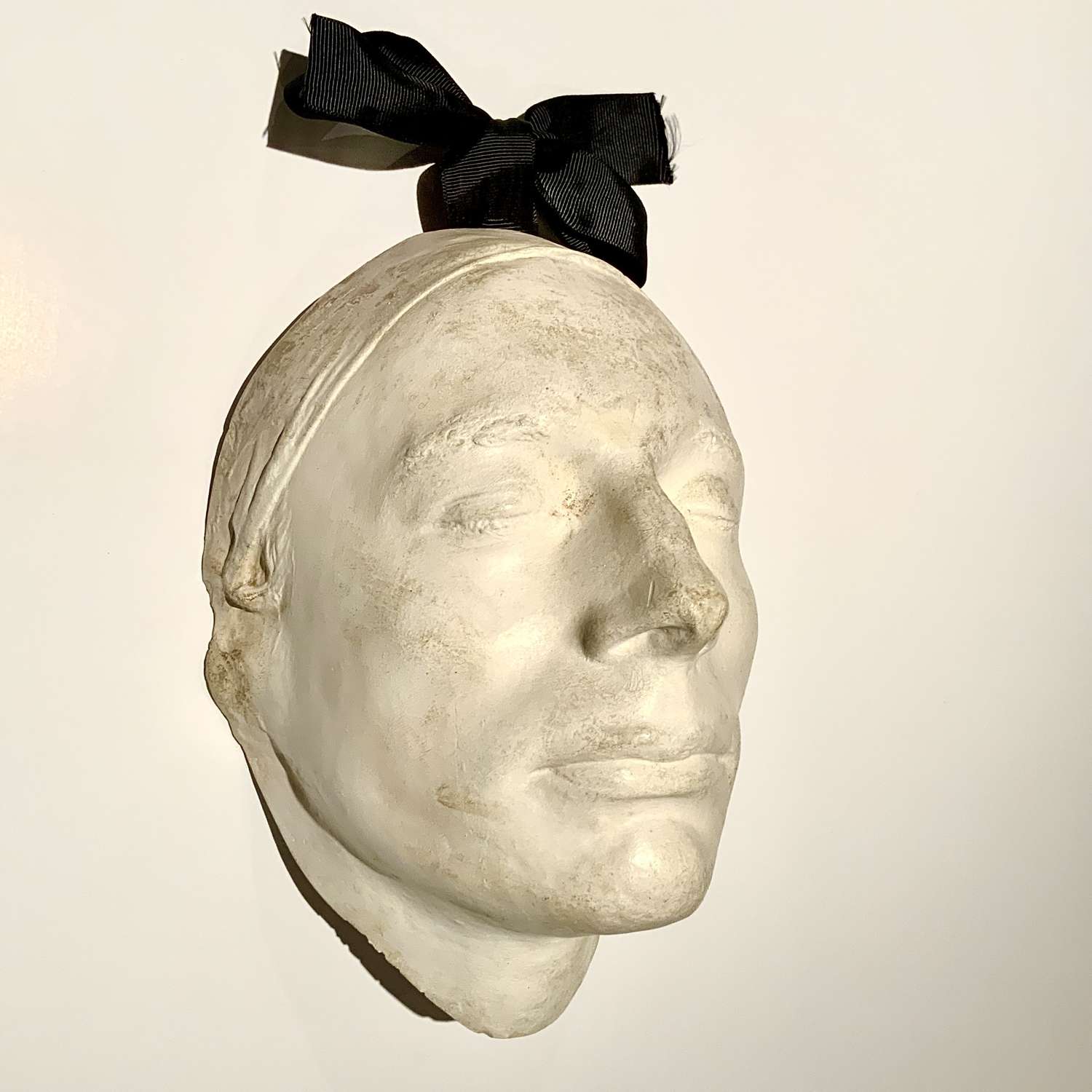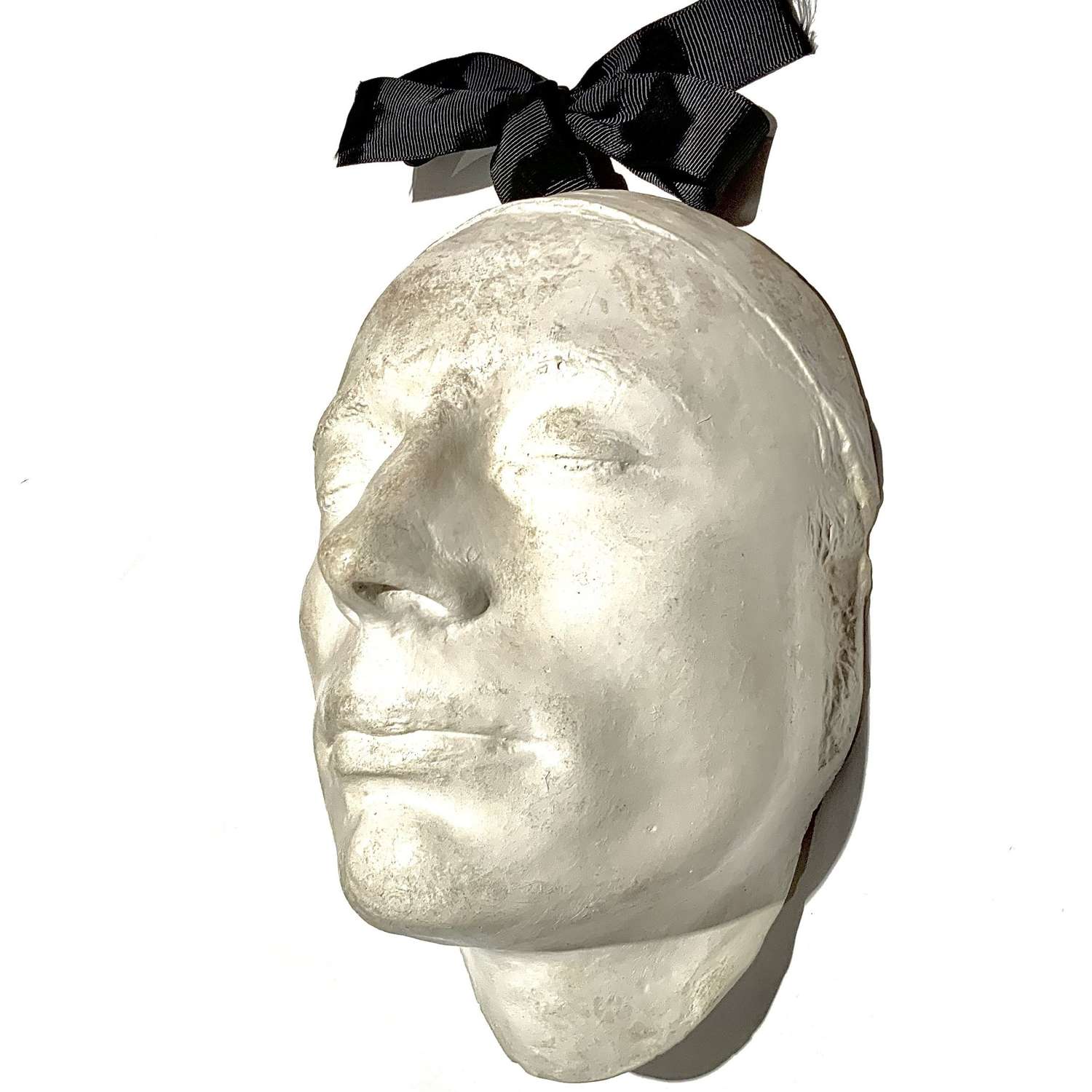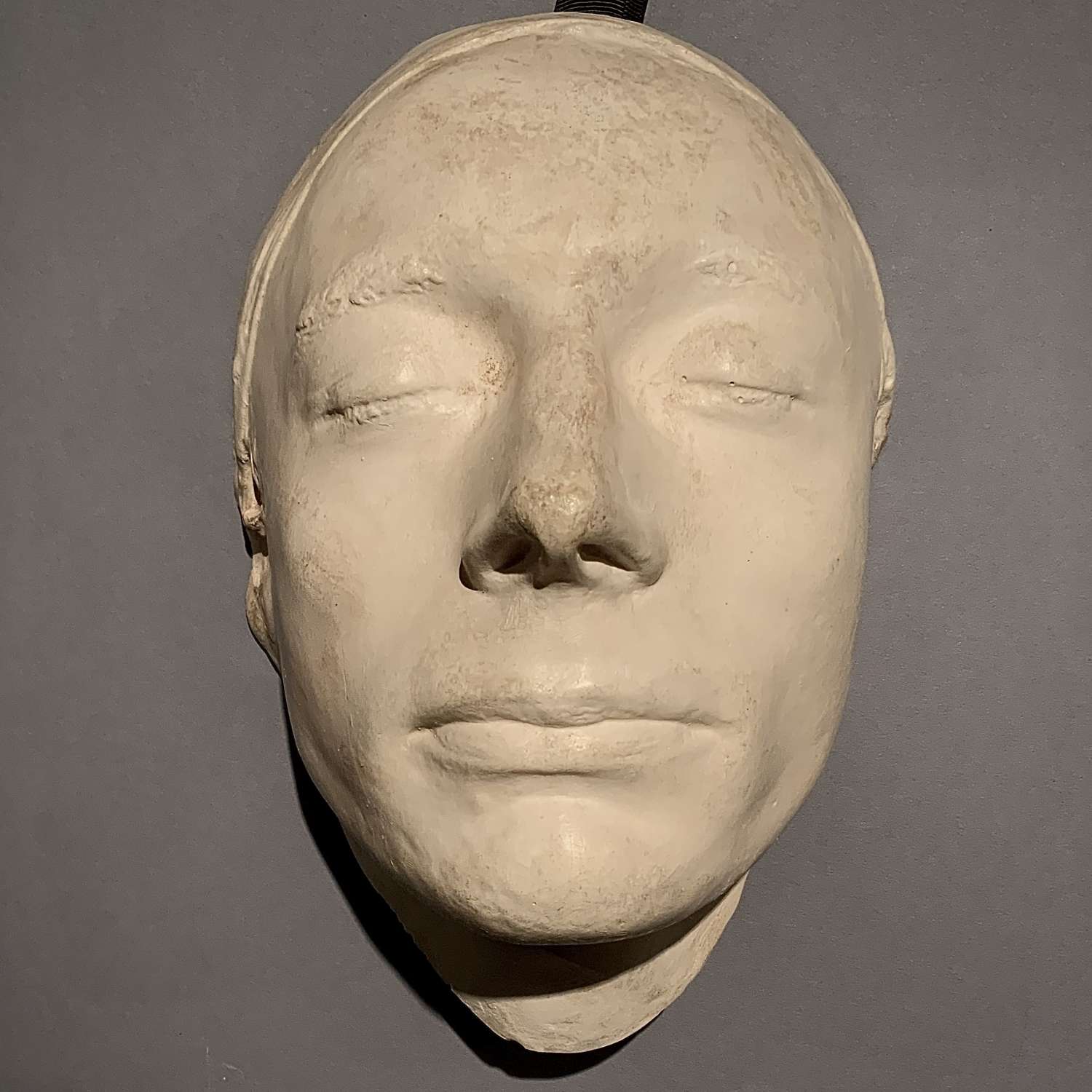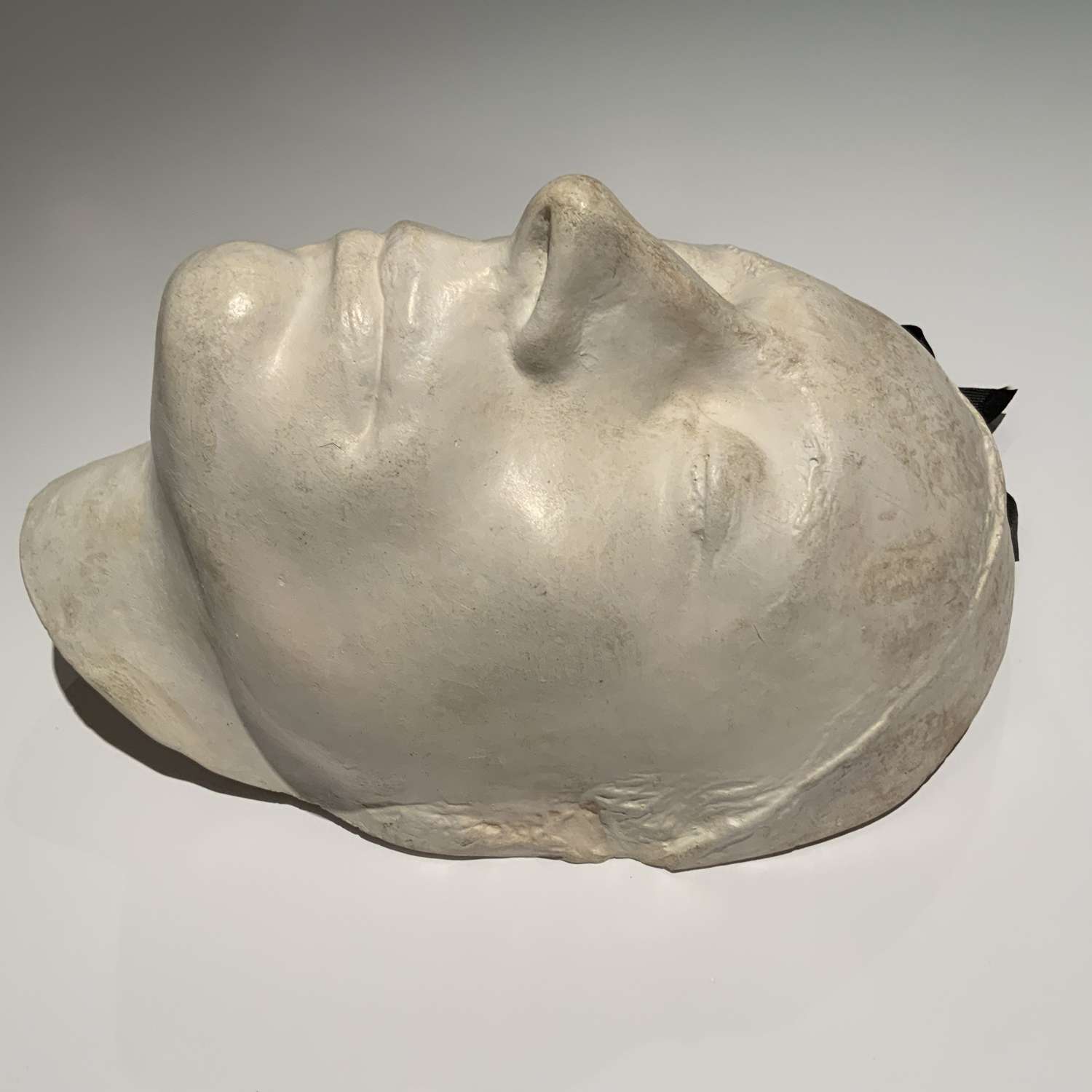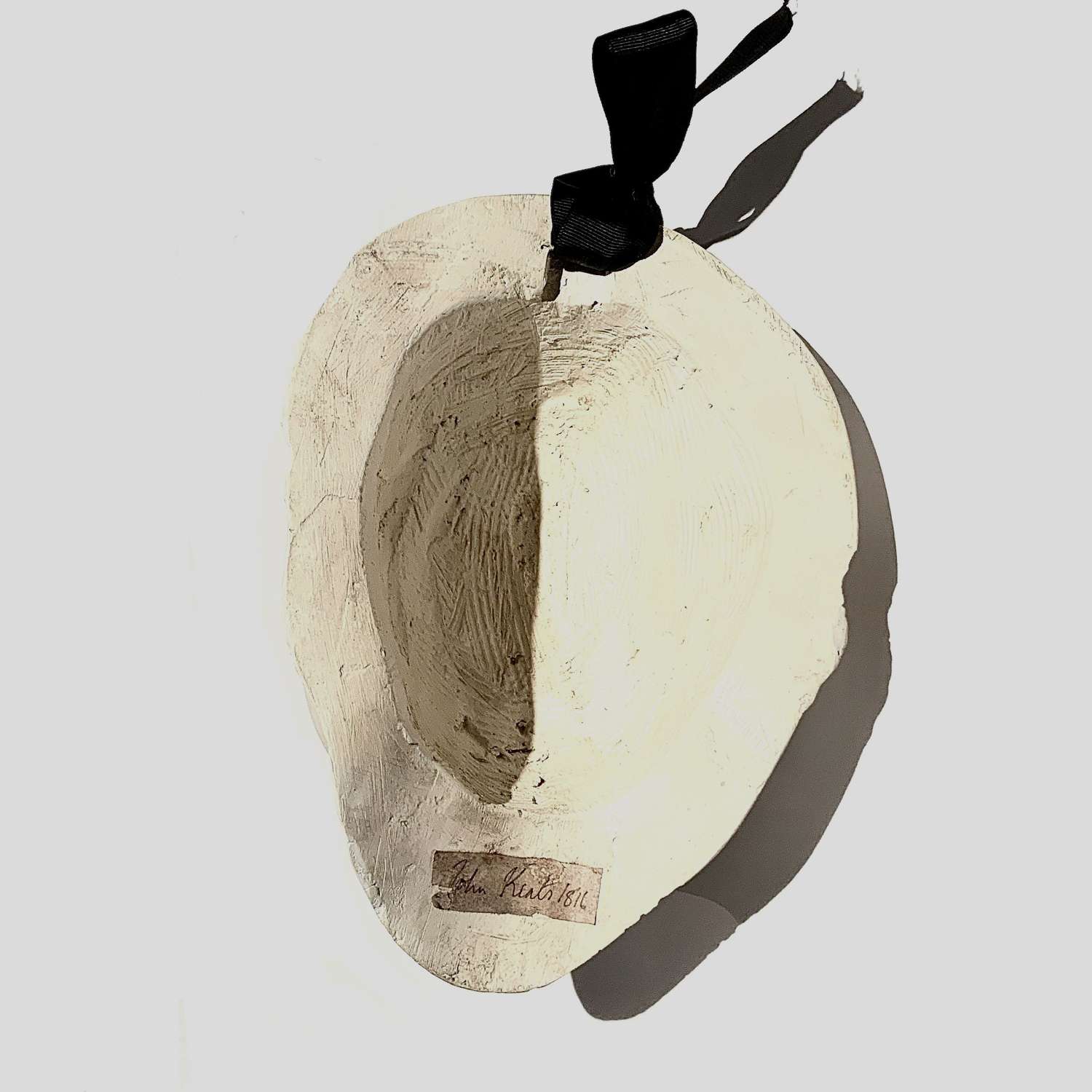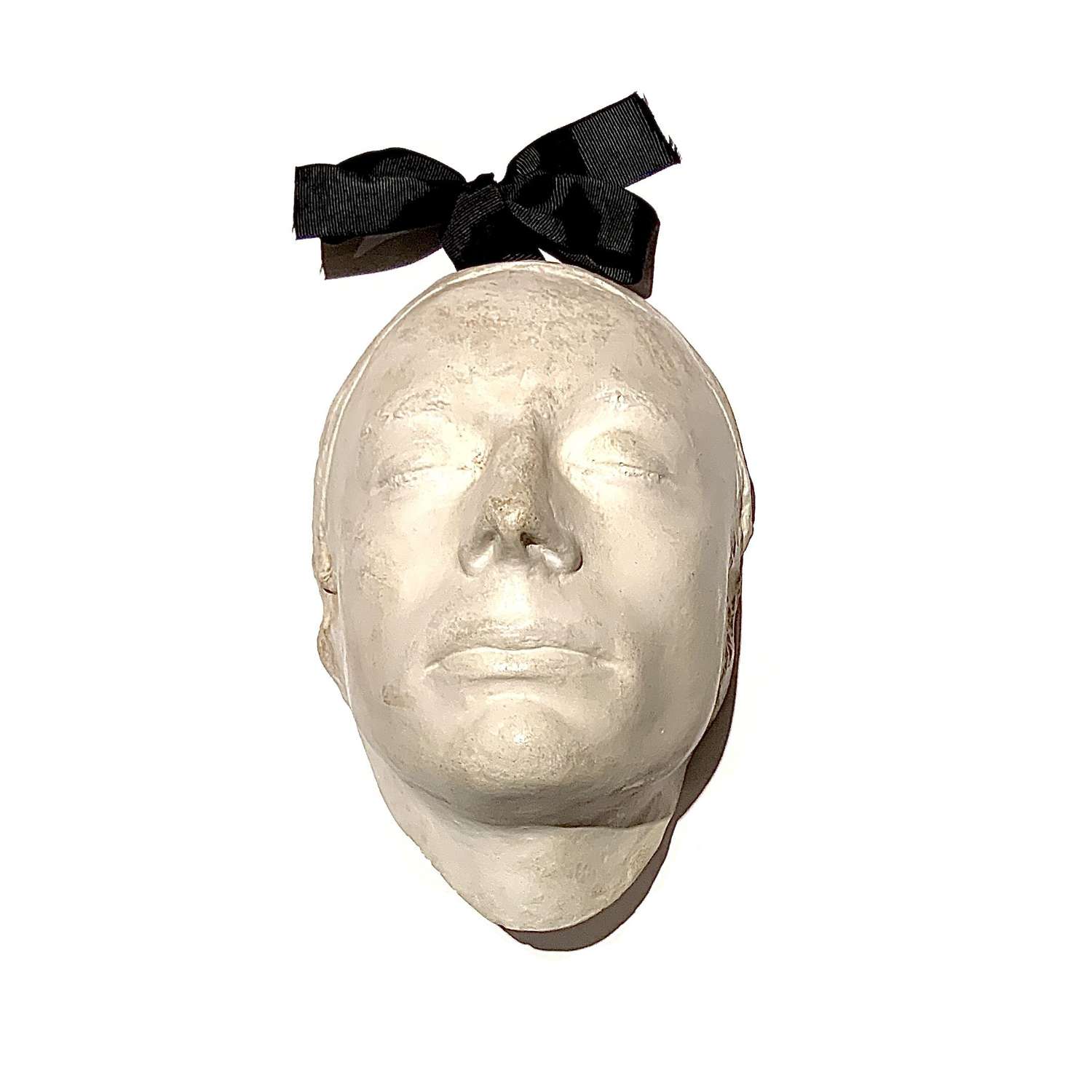
Tregeagle Fine Art |
Tel: 01865 882 854 Email: sandyrich71@gmail.com Web site: https://www.tregeaglefineart.com/ |
|
Code: 10906
Dimensions:
Life Mask of John Keats (1795-1821)
after that made in 1816 by Benjamin Robert Haydon (1786-1846)
Plaster of Paris
Late 19th-20th Century
Measures:-
24.5 cm high x 15 cm wide
Provenace:-
Private Collection, Cambridge
A nicely patinated cast of the life mask of the Romantic poet John Keats, the original made by Benjamin Robert Haydon (1786-1846). An old manuscript label on the verso of the neckline, written in black ink reading "John Keats, 1816". There is an integrated loop for suspension within the plaster verso, currently with a black silk ribbon, tied in a bow to hang.
Benjamin Robert Haydon first met Keats on 19th October 1816 and the two became a good friends. Haydon asked if he could include Keats as one of the onlookers in his massive painting "Christ’s Entry into Jerusalem" (now in the collection of The Athenaeum of Ohio, Cinncinati, Ohio, USA). He made the original life mask so that he could draw from it without Keats having to sit for hours. The cast was made on Saturday 14th December 1816. Keats’s hair was bandaged, he then lay on his back while his face was greased with fat and straws stuck up his nose so that he could breathe while Haydon covered his face with Plaster of Paris. This was then left to set before being pealed off and then finished by hand. In this way a negative mould of Keats's face was made, from which positive casts could be made.
Keats's face is serene but there is, perhaps, a noticeable smile on his lips. Sitting for the mask would probably have been quite amsusing though uncomfortable. There is therefore, in this life mask, a more animated sense of the sitter's character than from those in a death mask taken from the deceased subject. Here he has a serene stillness: the viewer can sense the contemplative composure observed during the period of the plaster setting. Fanny Keats said Haydon's mask was "a perfect copy of the features of my dear brother. The expression of course is wanting as the eyes are closed, and perhaps the mouth is a little compressed which is but natural, as the mask could not have been taken with the lips unclosed. It is perfect, except for the mouth, the lips being rather thicker and somewhat compressed which renders the expression more severe than the sweet and mild original."[1]
A death mask was also made of Keats's features in Rome following his demise there from tuberculosis on 23 February 1821 at the age of 25. In the death mask the poet's lips and eyes are expressionless and, after year's of illness, he has a thinner nose, slightly more hollowed cheeks and more pronounced infraorbital edema beneath his eyes.[2]
By the mid-19th-century a matrix taken from an original cast of the Life Mask had come into the possession of the Brucciani firm of cast-makers who subsequently issued copies from it. The Brucciani matrix was acquired by the V&A casting service in the 1920s and subsequently transferred to the British Museum in the early 1980s. The mask here is thought to be a late 19th to early 20th Century issue.
See NPG 686 for a life cast which had belonged to the poet John Hamilton Reynolds. For similar see Keats-Shelley House Museum, Rome, REL-004 (Gift of Vera Cacciatore, 1978)
Notes:-
[1] Quoted on p.217, Marie Adami, "Fanny Keats", London, John Murray Ltd, 1937
[2] For a scarce version of Keats's Death Mask and a description of its manufacture see Lot 46, Christie's, London sale of "Valuable Books and Manuscripts" 9th December 2020 [Live Auction 18888] (Realised GBP 12,500)

